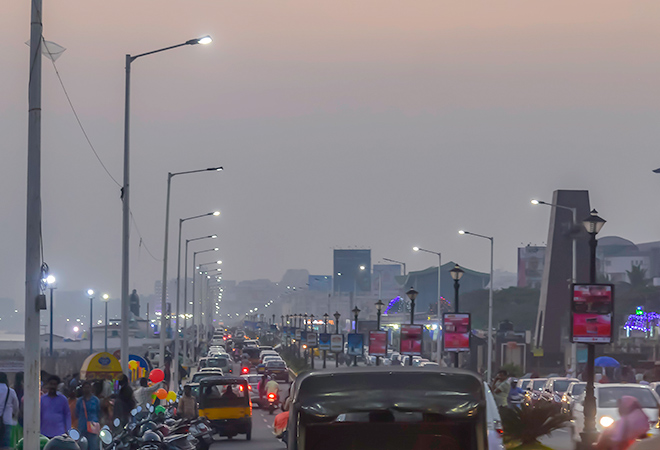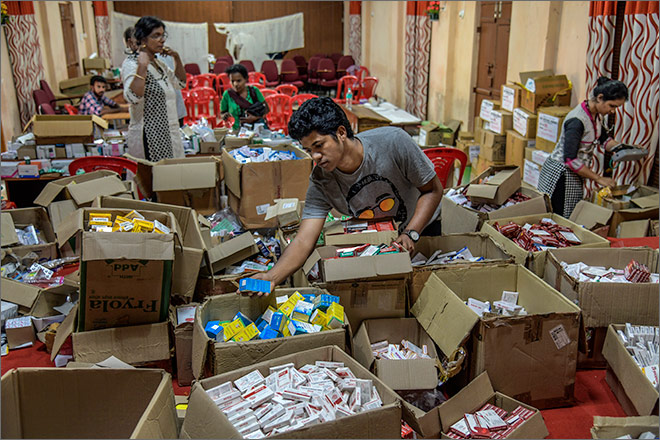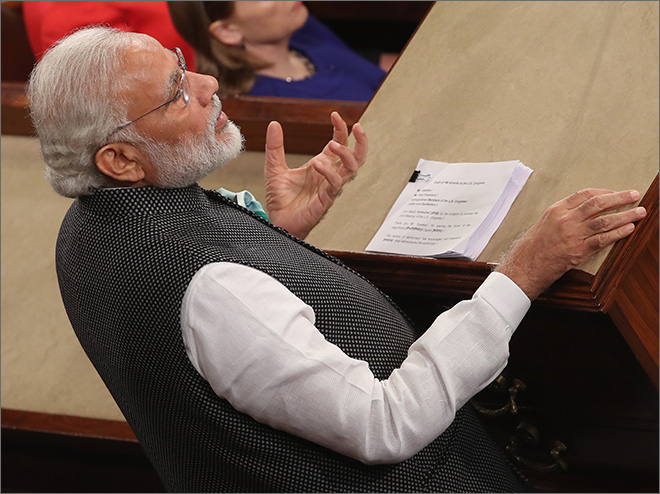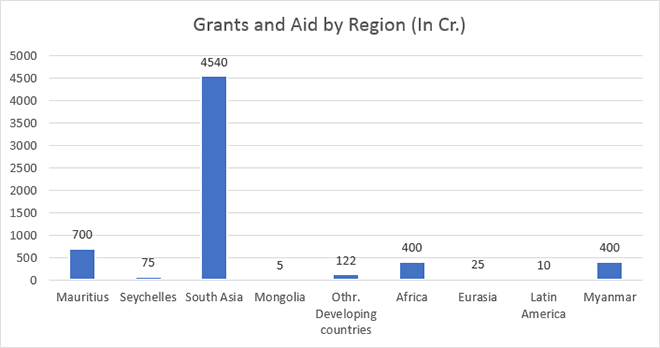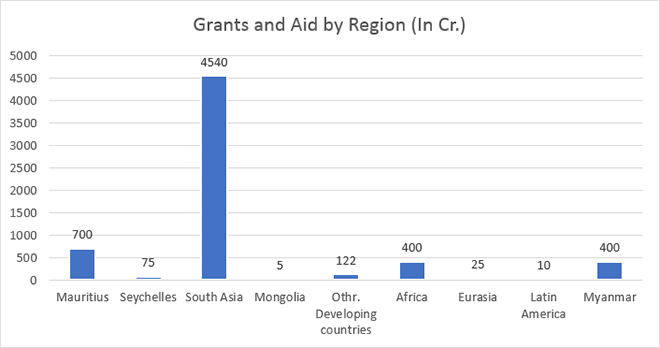
As five Dassault Rafale fighter jets – the first of 36 India agreed to purchase from France four years ago – landed at Ambala Air Force base, there was understandable celebration among civilians and those who don the military uniform in India. After all, this is the first high profile defence acquisition, barring the American assault helicopters, in decades.
The celebratory mood, however, must not hide the dark reality of India’s inept defence procurement process. The Indian Air Force, hobbled by fleet depletion and aircraft well past their fly-by-date, first communicated its desire to procure 126 Medium Multi-Role Combat Aircraft (MMRCA) to the Ministry of Defence in 2000. After two decades, three prime ministers, four Governments, and a dizzying number of flip-flops and somersaults, the first five Rafale fighter jets finally landed in India on 29th July.
Opportunistic media hype apart, the arrival of these jets should be a moment of sombre national introspection. A nation that set out to procure 126 aircraft is able to obtain just five after two decades, that too by having to throw away piles of files that prevented any progress. This is a saga of a nation with an incompetent ‘system’.
The arrival of these jets should be a moment of sombre national introspection. A nation that set out to procure 126 aircraft is able to obtain just five after two decades, that too by having to throw away piles of files that prevented any progress
India is unprepared for the ensuing decade that will witness a world in upheaval and where national security will demand a significant share of resources and human capital. The Biblical ‘Four Horsemen’ have long symbolised the end of times. An honest enquiry into India’s national security preparedness will be defined by the four horsemen whose arrival portend the coming of the Apocalypse.
First, as the MMRCA saga shows, is India’s institutional inability to quickly arrive at a decision, which is invariably followed by inadequacy when it comes to swift execution of that decision.
The Rafale story serves as a demonstrator of the Indian state’s woeful (in)capacity – of its severe budgetary constraints; its inept (and self-serving) bureaucracy; its crusty defence establishment riddled with turf wars, ego battles and a vaulting sense of entitlement; and its incompetent political class that has spectacularly failed to rise to the defence of India by putting national security above party politics.
These stakeholders must be reminded of history’s abiding lesson: No nation has achieved its full potential without first establishing a strong national security industrial base. In recent times, India has set itself on the path to realising this goal with an overwhelming dependence on foreign powers. Even then, it has repeatedly stumbled due to procrastination by the ‘babu-neta’ combine.
Second, the inability to be honest with oneself. This is marked by the inability to read history correctly and to recognise India’s real enemy. Despite the obvious lessons New Delhi should have drawn from its defeat in 1962, it has largely privileged placating Beijing only to further fuel China’s untenable ambitions. As part of this perverse posture, India’s custodians of discourse have downplayed the bloody nose India has given China on at least two occasions last century and even the significant battlefield losses inflicted on China this summer.
India’s many dalliances with China, be it at BRICS or over the AIIB (Asian Infrastructure Investment Bank), were shaped by the romanticism of co-creating an ‘Asian Century’. That should have ended with Doklam in 2017. It was a promise China never meant to keep or maybe never even made at all.
India’s many dalliances with China, be it at BRICS or over the AIIB (Asian Infrastructure Investment Bank), were shaped by the romanticism of co-creating an ‘Asian Century’. That should have ended with Doklam in 2017.
We have hidden facts from 1962 onwards from all, and we continue to hide facts about Chinese behaviour and action even today. Since 2013, Chairman Xi has made abundantly clear his absence of interest in Asian multi-polarity. In Doklam, he shouted it through a megaphone for all the world to hear. China apologists do not hear and do not care.
They fail to assess China as an implacable neighbour and Xi as afflicted with an insatiable lust for power and territory. They ignore the China that views India as a civilisational foe and the Communist Party that seeks to undermine its neighbour’s political, economic and social architecture. Instead, these ‘experts’ crowd out other views from powerful pages, explaining Beijing’s malfeasance as a consequence of India’s sovereign decisions, internal politics and enhanced partnership with America.
What will it take for India to admit, unambiguously, that its neighbour is a long-term geopolitical rival and an existential threat? The tangential elements of this outlook are in place: India’s rejection of China’s Belt and Road Initiative and, more recently, its digital avatar. But the question is: Will such tactical moves serve as the cornerstone of a long-term strategy? Or, since the elephant in the room can no longer be ignored, is the template for Wuhan 2.0 being drafted by the blind men (and women) who have over the decades led India to its China conundrum?
Third, the inability to sense and seize an opportunity. Many countries have realized, or are beginning to, that they hedged their bets in Asia incorrectly. Their misplaced mission to socialise China into a rules-based international order having totally failed, they are now confronted by the reality of an imperial Beijing. Can New Delhi leverage this opportunity?
In 1972, China sensed America’s need to counterbalance the USSR and used that moment to sneak past the Iron Curtain. The Great Thaw was less a Henry Kissinger masterstroke and more a Mao success. The historic photograph in The Washington Post of a grinning President Richard Nixon with an inscrutable Paramount Leader Mao Zedong told the story best.
Beijing thought ahead and seized the moment, letting Washington foolishly believe it had stolen a march over China. Neither Nixon nor Kissinger could look beyond their immediate political imperative; China looked into the future, almost into the next century.
The lesson from that singular act of China was, and remains, that shadows of the past should not be allowed to precede India’s foray into a new world order. In 1971, Nixon ordered the US Seventh Fleet’s Task Force 74 into the Bay of Bengal as a nod to America’s ‘tilt’ towards Pakistan and to signal opposition to the Indo-Soviet Treaty.
But history moves in unpredictable cycles. The contrast between then and now is striking: The US has sent a carrier battle group into the region at a time when India and China are locked in a border confrontation. This time round, the group is exercising with Indian naval forces, bolstering a US-India partnership dedicated to resisting China’s coercive tactics and ensuring that the Indo-Pacific remains free and open. Clearly, 2020 is not 1971.
Asia has come a long way since the 1970s. In the retail market of the region’s geopolitics, India still commands a premium. As prospects of a two-front war become increasingly probable, can India shed its coy reluctance and operationalise arrangements that will welcome American naval presence in the Arabian Sea and the Bay of Bengal? A US frigate or two would send the signal to Rawalpindi to behave if India and China do engage militarily in the Himalayas. It would, in the medium term, also allow India and the US to manage the inevitable increase of Chinese presence in the Indian Ocean.
The first step towards this would be operationalising, even if for optical purposes, the Logistics Exchange Memorandum of Agreement by inviting US ships exercising in the region to use Indian facilities. This should further expand into the Indian Ocean with India facilitating an agreement on the Chagos Islands by leveraging its bilateral relations with Mauritius. A US presence at Diego Garcia is in India’s interest. It always was; now more than ever before.
Simultaneously, and before it’s too late, India must militarise its southern tip, the Andaman and Nicobar Islands: An air base and a naval docking facility are passé; India needs its very own Diego Garcia in its own national waters. If India does not do it now, very soon a rising crimson tide will leave it with no political room to have any choice. Far from matching China on the seas, if the Rafale saga is a pointer, Indian boats may need Chinese permission to leave the lagoons as our hardware would be weak and partnerships non-existent.
Although there is bi-partisan consensus in the US on Washington’s China policy, it is worth recalling that Joe Biden was part of an Administration that once harboured imaginations of a ‘G-2’ world. Drawing the US into the Indian Ocean and India’s seas will stymie such inclinations as well as get rid of the shadows of 1971 that lurk in some minds.
Although there is bi-partisan consensus in the US on Washington’s China policy, it is worth recalling that Joe Biden was part of an Administration that once harboured imaginations of a ‘G-2’ world
From the seas to the mountains, India must use the response to China’s hostility to its advantage – boldly, robustly and openly. For instance, the Quad can be taken beyond maritime security if India were to invite its partners for mountain exercises in the Himalayas next summer. China has militarised the Line of Actual Control (LAC). India militarising its Himalayan zone and creating special multilateral training and collaboration programmes would be an apt sovereign response.
The ongoing confrontation in Ladakh reminds us that claims over territory have to be backed up by connectivity, military presence and control. We may need to prepare for a highly militarised and un-tranquil LAC in the coming years.
As always, our commentariat will be pleading and pushing for ‘inaction’ as a policy option, in the mountains and in the seas. The underlying argument will be consistent with the ones deployed in the past – our actions must not provoke the dragon. The fact remains that China’s belligerence is not predicated on India’s actions, it flows from Beijing’s hostile and expansionist worldview.
Last, though not least, the inability to take its citizens into confidence. India is the only nation with great power ambition that has not adopted a formal and declared national security strategy. What passes for one is the frail doctrine of ‘strategic autonomy’, open to multiple subjective interpretations. Like ‘Panchsheel’, ‘Non-Alignment’ and ‘South-South Cooperation’, it is just another convenient phrase. It serves as a shield for indecisiveness, not as a lighthouse for agile decision-making.
Beyond the shrill prime time media wars that shape the foreign policy outlook of India’s voters, they largely have no metrics through which to judge the actions of their elected Government. India’s 1.3 billion citizens deserve far better. But since that awareness is denied to them, they applaud the landing of five fighter jets while awaiting another 31 on some unknown date, even as the country faces off Xi’s forces in the north and a ‘terror factory’ to its west.
Beyond the shrill prime time media wars that shape the foreign policy outlook of India’s voters, they largely have no metrics through which to judge the actions of their elected Government
The question is, should we ignore the four horsemen and continue marching straight into a geopolitical Apocalypse?
